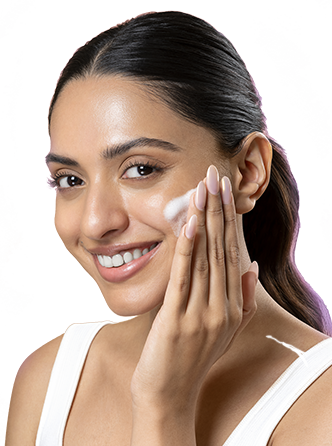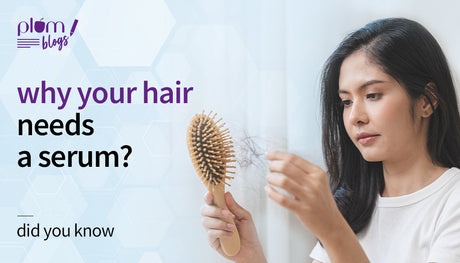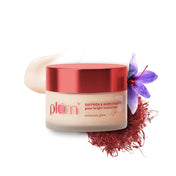
IN THIS ARTICLE
What is Dandruff?
Dandruff is a common scalp condition that affects many people. It is characterized by flaky and itchy skin on the scalp. While it is not a serious medical condition, it can be frustrating and embarrassing.
Why does Dandruff Occur?
Dandruff occurs when the scalp sheds dead skin cells at an excessive rate, leading to the formation of white or yellow flakes on the scalp and hair. These flakes can fall onto clothing, causing embarrassment and discomfort.
Causes of Dandruff 
The causes of dandruff can vary from person to person, but some of the most common factors include:
1. Yeast overgrowth:
Malassezia is a type of yeast that is naturally present on the scalp of most adults. When it grows excessively, it can cause irritation and inflammation, leading to dandruff. This yeast feeds on the natural oils produced by the scalp, called sebum. In some people, the body's immune response to Malassezia can trigger an overproduction of skin cells, which leads to the formation of dandruff flakes.
2. Dry scalp:
When the scalp becomes dry, it can become itchy and flaky, leading to the development of dandruff. This can be caused by a variety of factors, including cold weather, low humidity, and frequent use of hair products that strip the scalp of its natural oils. People with naturally dry skin may also be more prone to developing dandruff.
3. Seborrheic dermatitis:
Seborrheic dermatitis is a common skin condition that affects the scalp, causing redness, inflammation, and flakes. It is thought to be caused by an overgrowth of yeast on the scalp, as well as an overproduction of sebum. This condition can also affect other areas of the body, such as the face and chest.
4. Other factors
Other factors that can contribute to dandruff include stress, poor hygiene, certain hair products, and a diet that is high in sugar and saturated fats.
Each of these causes can lead to dandruff by disrupting the normal balance of the scalp's natural oils and skin cell turnover. Understanding the underlying cause of your dandruff can help you choose the most effective treatment for your specific situation. Some treatments, such as medicated shampoos or natural remedies, may be more effective for certain types of dandruff than others.
Home Remedies for Dandruff
Dandruff can be embarrassing and uncomfortable. While there are many over-the-counter treatments available, natural remedies can also be effective in reducing dandruff symptoms. Below are some of the most popular home remedies for dandruff and how to use them.
1. Tea Tree Oil
Tea tree oil is an essential oil that has natural antifungal and antibacterial properties. It can be an effective treatment for dandruff caused by yeast overgrowth. To use tea tree oil for dandruff, mix a few drops of tea tree oil with carrier oil, such as coconut oil or jojoba oil. Apply the mixture to the scalp and massage gently. Leave it on for at least 30 minutes or overnight before washing it off with a mild shampoo. Repeat once or twice a week.
2. Aloe Vera
Aloe vera is a natural moisturizer that can help soothe dry and itchy scalp. It also has anti-inflammatory properties that can reduce inflammation and irritation caused by dandruff. To use aloe vera for dandruff, apply fresh aloe vera gel directly to the scalp and massage gently. Leave it on for at least 30 minutes before washing it off with a mild shampoo. Repeat once or twice a week.
3. Apple Cider Vinegar
Apple cider vinegar has natural antibacterial and antifungal properties that can help reduce dandruff. It can also help restore the pH balance of the scalp, which can prevent yeast overgrowth. To use apple cider vinegar for dandruff, mix equal parts of apple cider vinegar and water. Apply the mixture to the scalp and massage gently. Leave it on for 15-20 minutes before washing it off with a mild shampoo. Repeat once or twice a week.
4. Coconut Oil
Coconut oil is a natural moisturizer that can help soothe dry and itchy scalp. It also has antimicrobial properties that can help reduce yeast overgrowth. To use coconut oil for dandruff, warm up the oil and apply it to the scalp. Massage gently and leave it on for at least 30 minutes or overnight before washing it off with a mild shampoo. Repeat once or twice a week.
Potential Benefits of Home Remedies for Dandruff
Using natural remedies for dandruff can have several potential benefits. They are generally affordable, easily available, and safe for most people. Additionally, natural remedies do not contain harsh chemicals that can cause further irritation to the scalp. While these remedies may not work for everyone, they can be a good option for those who prefer natural treatments.
The 4-Step Anti-Dandruff Routine
While most of us follow an elaborate routine for our skin, we don’t quite do the same for our hair. The truth is, we need to give our hair and scalp just as much attention if our focus is health and strength from root to tip. While a simple oil-shampoo-condition routine does the job of cleansing and conditioning your hair, you will need a much more sophisticated approach if you’re dealing with a recurring condition like dandruff.
Here’s the 4-step routine we swear by...
Step 1: Treat with a scalp scrub
Why a scalp scrub you ask? Well, just like face and body scrubs, scalp scrubs help remove dead skin cells along with excess oil and product buildup that tends to block hair follicles. Our Tea Tree Buildup Control Scalp Scrub is loaded with an intelligent mix of shikakai, brahmi, walnut and coconut shell powder that works to gently exfoliate the scalp, physically dislodge and remove white flakes and get rid of styling product buildup.
Note: This scalp scrub is meant to be used weekly.
Step 2: Cleanse with an anti-dandruff shampoo
The Tea Tree Dandruff Control Shampoo is enriched with safe, gentle, and naturally derived anti-dandruff actives like propanediol caprylate and piroctone olamine. Cleansing with this anti-dandruff shampoo allows for Malassezia to be tackled at the roots. Besides this, it also reduces itchiness and soothes the scalp.
Step 3: Nourish with a dandruff-fighting conditioner
The Tea Tree Dandruff Clear Conditioner combines tea tree oil and natural emollients to remove dandruff from the hair strands and keep it soft, nourished and hydrated. This conditioner instantly detangles, smoothens, and renews worn-out locks.
Step 4: Prevent dandruff from reappearing with a hard-working scalp serum
A leave on scalp serum is an effective way to provide targeted action against dandruff. Our Tea Tree Dandruff Fighting Scalp Serum will not only treat and prevent dandruff from recurring but will also inhibit the growth of dandruff causing Malassezia. To achieve the best results, you can use this serum daily for at least 4 weeks.
Note: Rinsing after each application is not required.
When to See a Dermatologist?
Dandruff can often be treated effectively with over-the-counter products and natural remedies. However, there may be times when it's necessary to see a dermatologist for more specialized treatment. In this section, we will discuss when you should consider seeing a dermatologist for dandruff.
1. Severe dandruff:
If your dandruff is particularly severe and not responding to over-the-counter treatments, it may be time to see a dermatologist. They can help to determine the underlying cause of your dandruff and recommend a more targeted treatment plan.
2. Persistent itching and redness:
If you're experiencing persistent itching and redness on your scalp, it may be a sign of a more serious condition, such as psoriasis or eczema. A dermatologist can help to diagnose and treat these conditions, which can often be mistaken for dandruff.
3. Other symptoms:
If you're experiencing other symptoms along with your dandruff, such as hair loss or skin lesions, it's important to see a dermatologist. These symptoms could be a sign of a more serious condition that requires medical attention.
In conclusion, dandruff can be a frustrating and embarrassing condition, but there are many ways to treat it. In this article, we have discussed some of the most effective methods for getting rid of dandruff, including medicated shampoos and natural remedies like tea tree oil and aloe vera.
It's important to understand the underlying causes of your dandruff, as this can help to guide your treatment plan. If your dandruff is not responding to over-the-counter treatments, it may be time to see a dermatologist for more specialized care.
Remember that everyone's scalp is different, and what works for one person may not work for another. It may take some trial and error to find the right treatment plan for you. But with persistence and patience, you can find relief from your dandruff symptoms.
We encourage you to try different methods and see what works best for you. Don't give up and remember that there is help available for dandruff. By taking care of your scalp and using the right products, you can say goodbye to dandruff and enjoy healthy, beautiful hair.
FAQs
Q1. Is my dry scalp causing dandruff?
A dry scalp and dandruff are two distinct scalp conditions that require different treatments. Drying on the scalp is caused by a lack of moisture, whereas dandruff is caused due to a fungus known as Malassezia furfur. Learn more about the difference between the two here.
Q2. Should I wash my hair less often because I have dandruff?
This is a common myth! However, to get rid of buildup and rinse away the flakes you should make it a point to wash your hair at least twice or thrice a week.
Q3. Can I use styling products if I have dandruff?
Styling products are used on hair lengths and not the scalp, so you can use them even if you are dealing with dandruff. Just make sure to exfoliate your scalp once a week with a scalp scrub to prevent buildup.
Q4. I have yellow flakes. Is that normal?
While yellow flakes are common, it could be a sign that you are dealing with a much more intense form of dandruff. Therefore, we recommend consulting your dermatologist for an appropriate diagnosis.





















